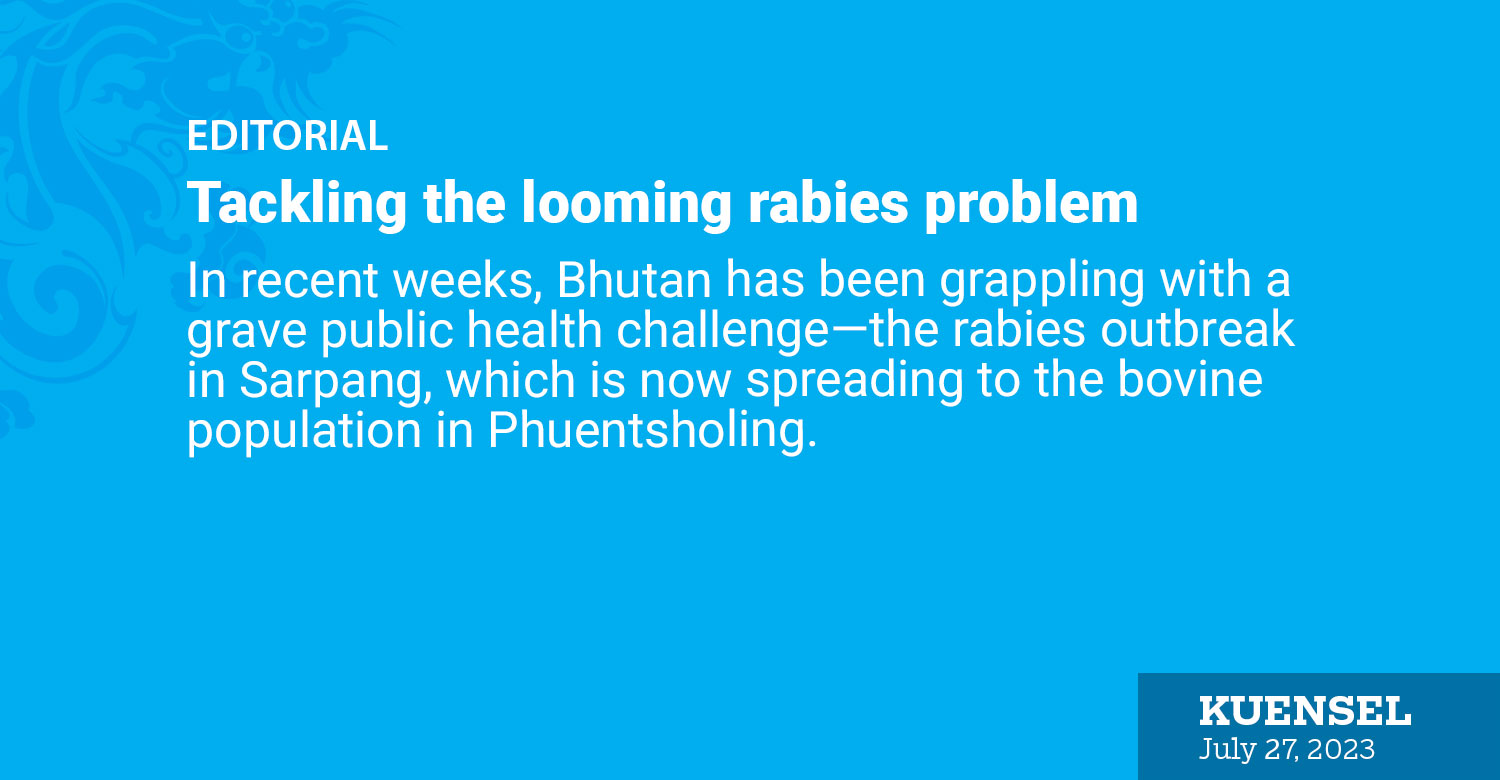In recent weeks, Bhutan has been grappling with a grave public health challenge—the rabies outbreak in Sarpang, which is now spreading to the bovine population in Phuentsholing.
As authorities intensify their monitoring and control measures, it is evident that the danger posed by this deadly disease is real and demands immediate attention.
With a large number of stray dogs contributing to the escalation of the outbreak, it is crucial that we combat this menace and protect both human and animal lives.
Rabies is a zoonotic disease, which means it can be transmitted from animals to humans. It is nearly always fatal once symptoms appear, making prevention and control efforts paramount. The first line of defense lies in public awareness and education about the disease.
The regional veterinary hospital and epidemiology in Phuentsholing should be commended for their swift action in confirming the rabies outbreak in bovine. However, there is much more that needs to be done. The government, local authorities, and communities must come together to implement a comprehensive strategy to curb the spread of rabies.
One crucial aspect of any rabies control programme is the vaccination of both domestic and stray animals. While domestic animals can be easily vaccinated, stray dogs pose a significant challenge. Authorities must devise an efficient and humane method to capture, vaccinate, and release stray dogs back into their territories.
This practice, commonly known as “Catch-Neuter-Vaccinate-Release” (CNVR), has shown promising results in curbing rabies in other countries and can be adapted to suit Bhutan’s unique context.
In addition to vaccination efforts, it is essential to address the issue of stray dog population management. Long-term solutions involve implementing effective sterilisation programmes to control their numbers. By controlling the population of stray dogs, we can greatly reduce the chances of rabies transmission and create a safer environment for both humans and animals.
The government must allocate sufficient resources to support the implementation of these measures. A well-funded and adequately staffed national rabies control programme can make a significant difference in containing and eradicating this deadly disease.
We cannot afford to be complacent in the face of this deadly disease that threatens both human and animal lives. By implementing a comprehensive strategy that includes public awareness, animal vaccination, population management, surveillance, and inter-sectoral collaboration, we can contain the outbreak.


